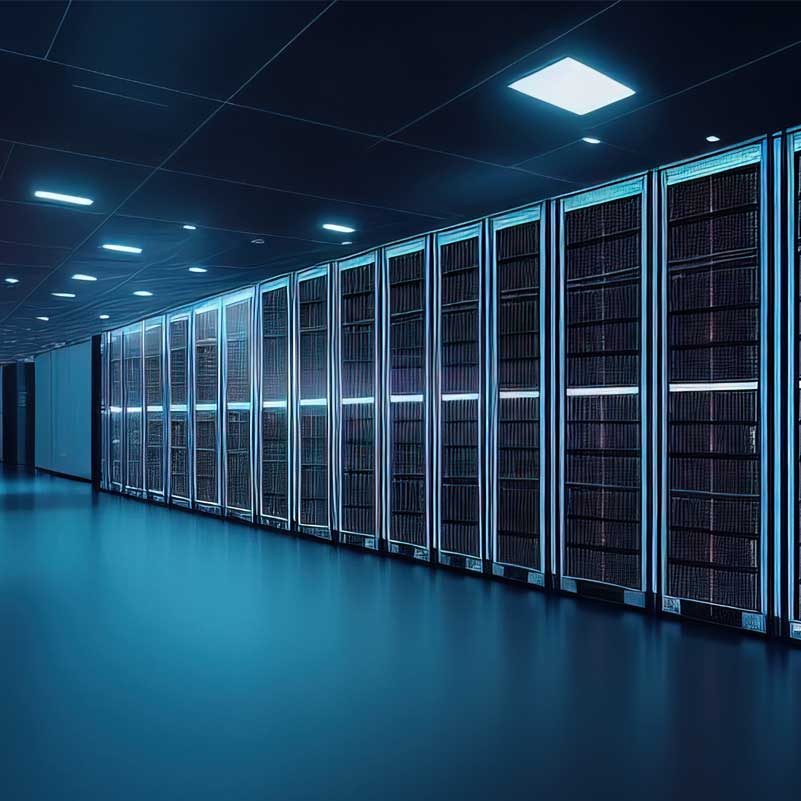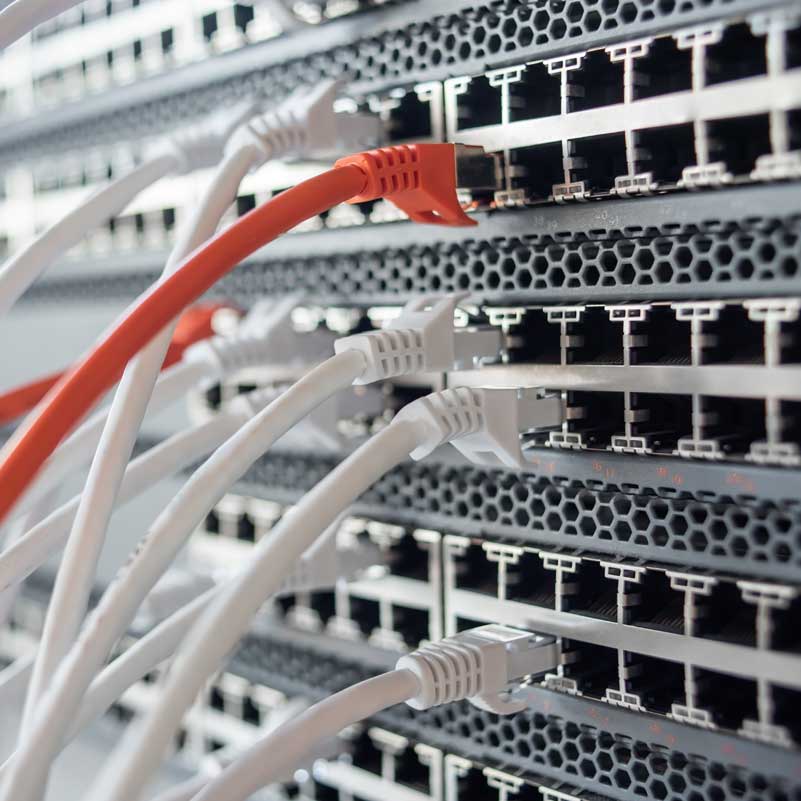
How Does Network Infrastructure Affect the Performance of a Dedicated Server?
In the intricate and multifaceted world of information technology, the performance of a dedicated server is paramount for any enterprise seeking to maintain a competitive edge. Central to this performance is the often-underappreciated yet critically important aspect of network infrastructure. But how does network infrastructure affect the performance of a dedicated server? To answer this, we must delve into the numerous components and dynamics at play within the network infrastructure, elucidating how each element interplays to either enhance or impair server performance.
Understanding Network Infrastructure

Network infrastructure encompasses the hardware and software resources of an entire network, enabling network connectivity, communication, operations, and management of an enterprise network. It includes the interconnection of network devices and computing resources, involving everything from routers, switches, and firewalls to servers, cables, and network protocols. At its core, network infrastructure serves as the backbone of data transmission, ensuring that information flows seamlessly between clients and servers.
Key Components of Network Infrastructure

Routers and Switches
Routers and switches are fundamental components of network infrastructure. Routers direct data packets between networks, determining the most efficient path for data travel. Switches, on the other hand, facilitate communication within a single network by receiving incoming data packets and forwarding them to their designated destination.
The efficiency and speed of routers and switches directly impact how network infrastructure affects the performance of a dedicated server. High-performance, low-latency routers and switches can significantly enhance data transmission speeds and reduce bottlenecks, ensuring that server requests are processed swiftly and efficiently.
Firewalls and Security Appliances
Network security is paramount, and firewalls play a crucial role in safeguarding network infrastructure. Firewalls monitor and control incoming and outgoing network traffic based on predetermined security rules, creating a barrier between trusted and untrusted networks. Security appliances, including intrusion detection systems (IDS) and intrusion prevention systems (IPS), further bolster network defenses.
While essential for protection, firewalls and security appliances can introduce latency if not properly optimized. The key is balancing security measures with performance, ensuring that protective mechanisms do not unduly hinder server responsiveness.
Cabling and Physical Connections
The physical layer of network infrastructure, consisting of cabling and connectors, also influences how network infrastructure affects the performance of a dedicated server. High-quality cabling, such as fiber optics, can transmit data at higher speeds and over longer distances without significant signal degradation compared to traditional copper cables.
Proper installation and maintenance of cabling are vital. Poorly managed cables can lead to data transmission errors, increased latency, and ultimately, reduced server performance.
Network Protocols
Network protocols are the rules and conventions for communication between network devices. Common protocols include TCP/IP (Transmission Control Protocol/Internet Protocol), HTTP (HyperText Transfer Protocol), and FTP (File Transfer Protocol). These protocols govern how data is packaged, transmitted, and received across the network.
The efficiency and reliability of these protocols significantly impact how network infrastructure affects the performance of a dedicated server. Protocols must be properly configured and optimized to minimize overhead and maximize data throughput.
The Impact of Network Bandwidth
Bandwidth is a critical factor in network infrastructure, representing the maximum rate of data transfer across a network path. Sufficient bandwidth ensures that data can be transmitted quickly and without congestion, directly influencing server performance.
Bandwidth Allocation
Proper bandwidth allocation is essential for maintaining optimal server performance. Network administrators must allocate bandwidth based on the needs of various applications and services. For example, high-bandwidth applications such as video streaming and large file transfers require more bandwidth compared to simple web browsing or email services.
Bandwidth Bottlenecks
Bandwidth bottlenecks occur when network demand exceeds available bandwidth, leading to slow data transmission and increased latency. Identifying and mitigating bottlenecks is crucial to ensure that servers can handle peak loads without performance degradation.
Latency and Its Effects
Latency refers to the delay between a client’s request and the server’s response. It is a crucial metric in network performance, significantly affecting user experience. High latency can result in slow website loading times, delayed data processing, and overall sluggish performance.
Sources of Latency
Several factors contribute to network latency, including:
- Propagation Delay: The time it takes for data to travel from the source to the destination.
- Transmission Delay: The time it takes to push all the data onto the transmission medium.
- Processing Delay: The time taken by devices (routers, switches) to process the data packet header.
- Queuing Delay: The time a data packet spends in queues at network devices before being transmitted.
Reducing Latency
To minimize latency, network infrastructure must be optimized at various levels. This includes using high-speed links, optimizing routing paths, upgrading network devices, and ensuring efficient traffic management. Reducing latency is crucial for enhancing how network infrastructure affects the performance of a dedicated server.
Network Redundancy and Reliability
Network redundancy involves duplicating critical components and connections within network infrastructure to ensure continuous operation in the event of a failure. Reliable network infrastructure with built-in redundancy can significantly enhance server performance by minimizing downtime and ensuring consistent data availability.
Failover Mechanisms
Failover mechanisms are essential for maintaining network reliability. These mechanisms automatically switch to a backup system or network path in case of a primary system failure. Implementing robust failover strategies ensures that servers remain accessible and operational even during hardware failures or network disruptions.
Load Balancing
Load balancing is another critical aspect of network redundancy. By distributing network traffic across multiple servers or network paths, load balancing ensures that no single server or link is overwhelmed. This not only improves performance but also enhances the resilience and scalability of the network infrastructure.
The Role of Data Centers
Data centers house the servers and network infrastructure that power online services and applications. The design and management of data centers play a significant role in how network infrastructure affects the performance of a dedicated server.
Data Center Architecture
Modern data centers employ advanced architectures designed for efficiency, scalability, and reliability. This includes the use of modular designs, high-density server racks, and advanced cooling systems. The physical layout and infrastructure within data centers are optimized to minimize latency and maximize data throughput.
Connectivity and Interconnects
Data centers rely on high-speed interconnects to facilitate rapid data transfer between servers and other network devices. This includes both internal connections within the data center and external connections to other data centers and networks. High-quality interconnects ensure that data flows smoothly and without interruption, enhancing overall server performance.
Power and Cooling
Power and cooling systems are critical components of data center infrastructure. Reliable power supply with backup generators and uninterruptible power supplies (UPS) ensures continuous server operation. Efficient cooling systems prevent overheating, which can degrade server performance and lead to hardware failures.
Virtualization and Cloud Computing
Virtualization and cloud computing have revolutionized the way network infrastructure is utilized and managed. These technologies enable the creation of virtual servers and networks, offering flexibility, scalability, and cost efficiency.
Virtual Networks
Virtual networks abstract physical network resources, allowing multiple virtual networks to operate on the same physical infrastructure. This enhances resource utilization and simplifies network management. However, the performance of virtual networks depends heavily on the underlying physical infrastructure and its optimization.
Cloud Services
Cloud computing services rely on robust network infrastructure to deliver resources and services over the internet. The performance of cloud-based dedicated servers is directly influenced by the network infrastructure of the cloud provider. High-speed connections, low latency, and reliable data centers are essential for optimal cloud service performance.
Security Considerations
Network security is a critical factor in how network infrastructure affects the performance of a dedicated server. Security measures must be integrated into the network infrastructure without compromising performance.
Network Segmentation
Network segmentation involves dividing a network into smaller segments to improve security and performance. By isolating sensitive data and critical systems, network segmentation reduces the risk of unauthorized access and limits the spread of potential threats. This also allows for more efficient traffic management and resource allocation.
Encryption
Encryption is essential for protecting data transmitted over the network. While encryption adds an additional layer of security, it can also introduce latency and processing overhead. Optimizing encryption protocols and hardware accelerators can mitigate performance impacts.
Monitoring and Management
Continuous monitoring and proactive management of network infrastructure are vital for maintaining security and performance. Network monitoring tools provide real-time visibility into network traffic, identifying potential issues before they impact server performance. Automated management solutions streamline network configuration and maintenance tasks.
The Human Element: Network Administration
Skilled network administrators play a pivotal role in optimizing how network infrastructure affects the performance of a dedicated server. Their expertise in configuring, monitoring, and managing network components ensures that the infrastructure operates efficiently and securely.
Network Design and Planning
Effective network design and planning are foundational to a robust network infrastructure. Network administrators must consider current and future requirements, scalability, redundancy, and security when designing network architecture. Thorough planning minimizes the risk of performance bottlenecks and ensures the network can adapt to changing demands.
Troubleshooting and Optimization
Proactive troubleshooting and optimization are essential for maintaining network performance. Network administrators must be adept at identifying and resolving issues such as congestion, latency, and hardware failures. Regular performance assessments and optimizations ensure that the network infrastructure continues to support high server performance.
Training and Education
Continuous training and education are crucial for network administrators to stay abreast of the latest technologies and best practices. As network infrastructure evolves, ongoing professional development ensures that administrators can effectively manage and optimize complex network environments.
Future Trends in Network Infrastructure
The landscape of network infrastructure is continually evolving, driven by advancements in technology and changing business needs. Emerging trends will shape how network infrastructure affects the performance of a dedicated server in the coming years.
5G and Beyond
The advent of 5G technology promises to revolutionize network infrastructure with ultra-high-speed connections, low latency, and massive device connectivity. For dedicated servers, this means faster data transmission, improved real-time processing, and enhanced support for IoT (Internet of Things) applications.
Software-Defined Networking (SDN)
Software-Defined Networking (SDN) is an innovative approach to network management that decouples the control plane from the data plane. This allows for centralized network management, automation, and dynamic configuration. SDN can significantly improve network agility, efficiency, and performance.
Edge Computing
Edge computing involves processing data closer to its source, reducing latency and bandwidth usage. By decentralizing data processing, edge computing can enhance the performance of dedicated servers, especially for applications requiring real-time processing and low latency, such as autonomous vehicles and smart cities.
Artificial Intelligence and Machine Learning
Artificial Intelligence (AI) and Machine Learning (ML) are increasingly being integrated into network infrastructure for predictive analytics, automated troubleshooting, and optimization. AI and ML can identify patterns and anomalies in network traffic, enabling proactive performance management and enhanced security measures.
Conclusion
The performance of a dedicated server is inextricably linked to the quality and efficiency of the underlying network infrastructure. From routers and switches to cabling and protocols, every component plays a critical role in ensuring that data flows smoothly and efficiently. Understanding how network infrastructure affects the performance of a dedicated server is essential for businesses seeking to optimize their IT operations and deliver seamless user experiences.
As technology continues to advance, staying abreast of the latest trends and best practices in network infrastructure will be vital. By investing in robust, high-performance network infrastructure and skilled network administration, businesses can ensure their dedicated servers operate at peak performance, supporting their growth and innovation in an increasingly digital world.


